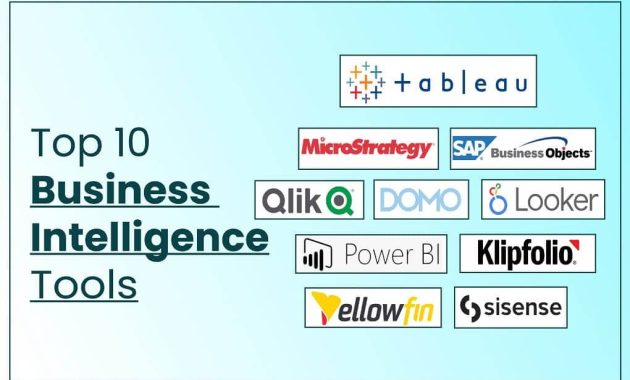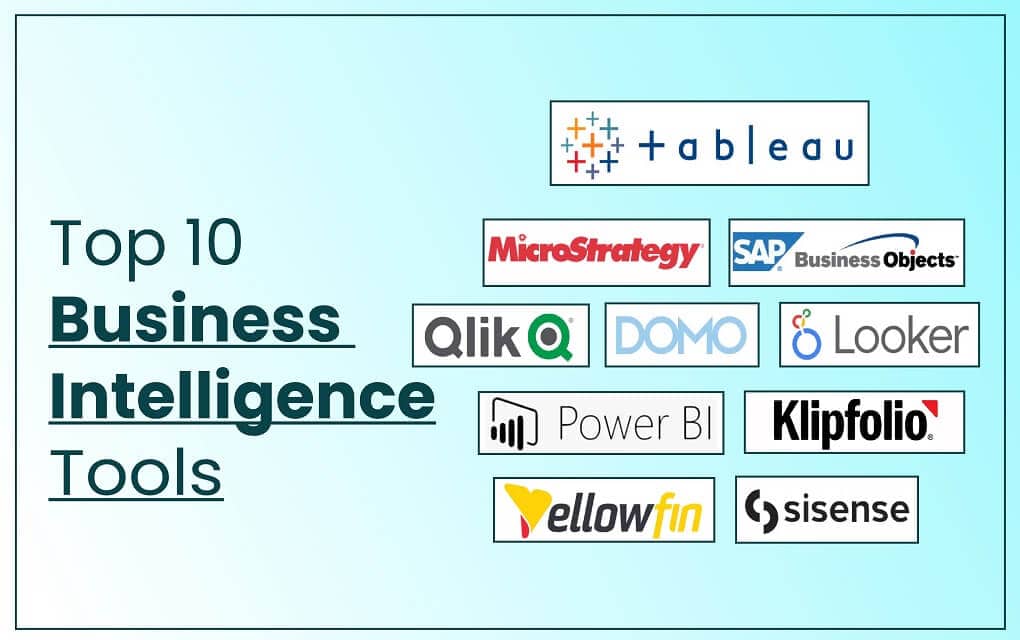
Beginner’s Guide to 5 Business Intelligence Tools Used by Experts
In today’s data-driven world, businesses are swimming in information. But raw data is useless without the right tools to make sense of it. That’s where Business Intelligence (BI) tools come in. These tools transform raw data into actionable insights, helping businesses make better decisions. This Beginner’s Guide to 5 Business Intelligence Tools Used by Experts will provide a comprehensive overview, empowering you to navigate the world of BI. This guide focuses on tools that are frequently leveraged by industry professionals. We’ll delve into what they are, how they work, and why they’re crucial for success. Understanding these tools is a vital step for any aspiring data analyst, business owner, or anyone seeking to leverage data effectively. The tools discussed here represent a spectrum of capabilities, from data visualization to advanced analytics. This guide aims to provide a clear and concise understanding of each tool’s strengths and weaknesses.
What is Business Intelligence?
Before diving into the tools, it’s essential to understand what Business Intelligence is. BI encompasses the strategies and technologies used for data analysis. The goal is to provide historical, current, and predictive views of business operations. BI helps businesses make informed decisions based on data, rather than intuition. It involves collecting, processing, analyzing, and visualizing data. This leads to the identification of trends, patterns, and anomalies. Effective BI implementation improves decision-making, operational efficiency, and strategic planning. It fosters a data-driven culture within an organization. [See also: The Importance of Data-Driven Decision Making]
The Core Components of a Business Intelligence System
A typical BI system consists of several key components. These components work together to transform raw data into actionable insights. Understanding these elements is crucial for appreciating how the tools function. They enhance the overall BI process.
- Data Sources: This is where the data originates. It can include databases, spreadsheets, cloud services, and more.
- Data Extraction, Transformation, and Loading (ETL): This process involves extracting data from various sources, transforming it into a usable format, and loading it into a data warehouse.
- Data Warehouse: A central repository where data is stored, organized, and optimized for analysis.
- Data Analysis Tools: These are the tools that perform the actual analysis. This includes reporting, querying, and data mining.
- Data Visualization: The presentation of data in visual formats like charts and graphs, making it easier to understand.
- Reporting and Dashboards: These are the outputs of the BI system. They provide users with insights and key performance indicators (KPIs).
Top 5 Business Intelligence Tools Used by Experts
Now, let’s explore five of the top Business Intelligence tools used by experts. These tools are chosen for their functionality, popularity, and impact. Each offers unique capabilities, catering to different business needs and levels of technical expertise. This information will help you choose the right tool for your needs.
Tableau
Tableau is a leading data visualization tool. It’s known for its intuitive interface and powerful features. It allows users to create interactive dashboards and reports. Tableau excels in connecting to various data sources. This includes databases, cloud services, and spreadsheets. Its drag-and-drop interface makes it easy to create visualizations. Even users with limited technical skills can create complex charts and graphs. Tableau’s ability to handle large datasets is a significant advantage. It supports real-time data updates. Tableau is widely used across industries. Experts favor it for its ease of use and robust analytical capabilities. [See also: Data Visualization Best Practices]
Key Features of Tableau:
- Interactive dashboards
- Wide range of data connectors
- Drag-and-drop interface
- Real-time data updates
- Advanced analytics capabilities
Microsoft Power BI
Microsoft Power BI is a comprehensive BI tool. It integrates seamlessly with other Microsoft products. It’s a cost-effective solution for many businesses. Power BI offers a wide array of features, including data modeling, data visualization, and reporting. It allows users to connect to a variety of data sources. Power BI’s user-friendly interface makes it accessible to users of all skill levels. Power BI’s integration with Excel is a major benefit for many organizations. Its strong community support and frequent updates add to its appeal. Microsoft Power BI is a powerful tool. Experts use it for its versatility and affordability.
Key Features of Microsoft Power BI:
- Data modeling
- Interactive dashboards and reports
- Integration with other Microsoft products
- Affordable pricing
- Regular updates and improvements
Qlik Sense
Qlik Sense is a self-service Business Intelligence tool. It’s designed for data discovery and exploration. It uses an associative data model. This lets users uncover insights and relationships in their data. Qlik Sense offers a visually appealing interface. It supports a wide range of data connectors. Its advanced analytics capabilities make it a favorite among data experts. Qlik Sense is great for data-driven storytelling. Its ability to handle complex data sets is a plus. Qlik Sense offers powerful features for data discovery. Experts value its flexibility and user-friendliness. [See also: The Power of Data Storytelling]
Key Features of Qlik Sense:
- Associative data model
- Self-service BI capabilities
- Data discovery and exploration
- Visually appealing interface
- Advanced analytics features
Looker
Looker is a modern Business Intelligence and data analytics platform. It’s designed for businesses that need a more collaborative approach. Looker is built on a data modeling layer. This ensures data consistency and accuracy across the organization. Looker offers robust data governance features. This is important for organizations with strict compliance needs. It supports a wide range of data sources and integrations. Looker’s focus on data governance and collaboration makes it a favorite among experts. Experts appreciate its scalability and advanced features. Looker is a great choice for large enterprises.
Key Features of Looker:
- Data modeling layer
- Robust data governance
- Collaboration features
- Scalability for large enterprises
- Advanced analytics and reporting
Sisense
Sisense is a Business Intelligence tool. It’s designed for complex data environments. It provides powerful analytics capabilities. Sisense allows users to analyze large datasets quickly. It’s known for its speed and performance. Sisense offers a flexible and scalable architecture. It supports a wide range of data sources and integrations. Sisense is a robust tool for organizations with demanding analytical needs. Experts value its speed and scalability. Sisense is a good option for businesses seeking advanced analytics.
Key Features of Sisense:
- In-memory processing for speed
- Scalable architecture
- Advanced analytics capabilities
- Flexible data modeling
- Support for large datasets
Choosing the Right Business Intelligence Tool
Selecting the right BI tool depends on your specific needs. Consider your data sources, analytical requirements, and budget. Also, consider the technical skills of your team. Start by assessing your current data infrastructure. Then, determine the types of insights you need. Evaluate the features and capabilities of each tool. Many tools offer free trials. This lets you test the tool before making a commitment. Consider factors like ease of use, data connectors, and data visualization capabilities. Compare pricing models and support options. Choosing the right BI tool is a crucial decision. It will significantly impact your business. [See also: How to Choose the Right BI Tool for Your Business]
Implementing Business Intelligence Tools
Implementing a BI tool involves several steps. Plan your implementation carefully to ensure success. First, define your goals and objectives. Identify the key performance indicators (KPIs) you want to track. Then, choose the appropriate BI tool. Prepare your data by cleaning and transforming it. Connect the tool to your data sources. Design and build your dashboards and reports. Train your team on how to use the tool. Monitor the performance of your BI system. Make adjustments as needed to optimize its effectiveness. Regular training and updates are important. Proper implementation ensures the BI tool delivers its full value.
The Future of Business Intelligence
The field of Business Intelligence continues to evolve rapidly. New technologies and trends are emerging. Artificial intelligence (AI) and machine learning (ML) are playing a bigger role. These technologies are enhancing data analysis and decision-making. Automation is streamlining data processes. This increases efficiency. Cloud-based BI solutions are becoming more popular. They offer scalability and flexibility. Data democratization is empowering more users to access and analyze data. The future of BI is about making data insights accessible. It’s also about making them more powerful and actionable. These trends will shape how businesses leverage data. They will help them gain a competitive advantage. The right Business Intelligence tools can help you stay ahead.
Conclusion
This Beginner’s Guide to 5 Business Intelligence Tools Used by Experts has provided a comprehensive overview. We discussed the importance of BI. We also explored five leading tools. Tableau, Power BI, Qlik Sense, Looker, and Sisense are all powerful. Each tool has its own strengths and weaknesses. They cater to different business needs. Remember to choose the right tool. Consider your specific requirements. By leveraging these tools, businesses can unlock the power of their data. They can make better decisions. They can gain a competitive edge. Investing in BI is an investment in the future. Use this guide to start your BI journey.

